Text

We live in a world which respects power above all things. Power, intelligently directed, can lead to more freedom. - Mary Jane McLeod Bethune (July 10, 1875 – May 18, 1955)
She was an American educator and civil rights leader best known for starting a school for African American students and for being an adviser to President Franklin D. Roosevelt.
107 notes
·
View notes
Text
Hip Hop and Grunge
This is not new, but I thought it was interesting how Grunge and Hip Hop have become closer in closer over the past few years. Through the sporting of vintage rock band tees, ripped denim, and plaid to the sporting of jordans with new era fitted caps, Grunge and Hip Hop have thoroughly become integrated into one another in popular culture where neither are distinguishable from one another. Rappers (probably considered pop stars) like Future, Big Sean, and Kanye West are seemingly becoming indistinguishable style-wise from figures like Justin Beiber. A strange but notable occurrence.
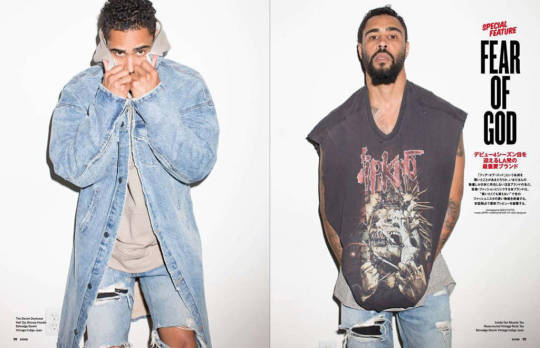
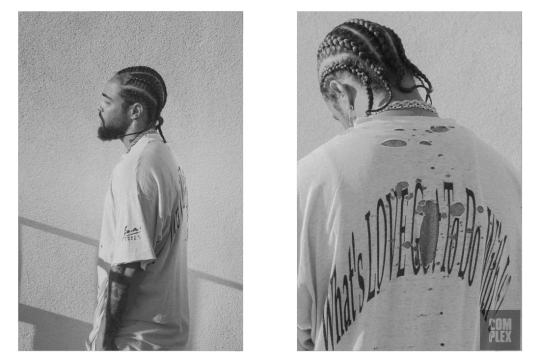
-Harrison G.
2 notes
·
View notes
Text
Street Etiquette and the Shifts
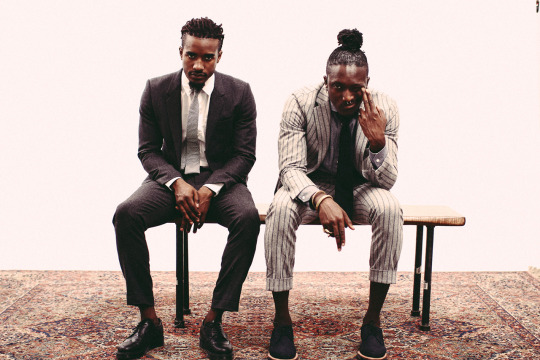
[Founders: Travis Gumbs (Right) and Joshua Kissi (Left)]
When I first started following Street Etiquette, I was a freshman in college. At the time I remember they were seemingly just known in the internet tumblr scene; people referred to their style the reemergence of Black Dandyism. I did not really see these guys as Dandy’s but just interested young guys interested in the history and evolution of black male fashion. There style to me fused diasporic styles with conservative professionalism in interesting ways. This was around the time they started their brand Black Ivy.
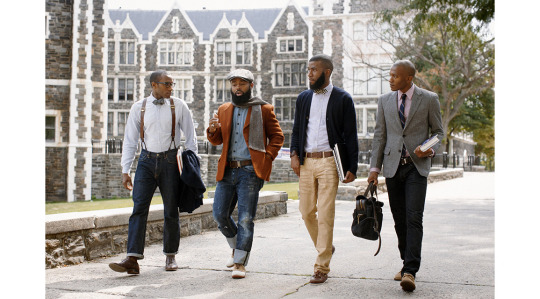
[Black Ivy shoot]
Although Black Ivy alluded to black elitism and classism, I think it represented an interesting time in black urban fashion where images of black men were stagnant and monolithic. This felt like a moment when monolithic images of black men dominated, and anything outside of that depiction was aberrant. I always connect fashion to waves of music, so to me, this moment chronicled an alternative movement away from rappers and entertainers like Dipset, 50 cent, Dem Franchize Boyz, Cool Kids, and other black men depicted wearing louder colors or baggier clothing. This style of fashion seemed to coincide with a new black millennial generation emerging into urban adulthood.
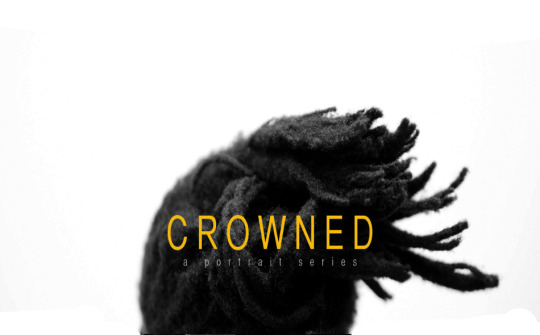
[Crowned ‘12]
Along with their fashion, street etiquette in a lot of ways made natural, longer hair styles for men more mainstream in popular imagination. With all of the interesting meanings attached to black hair, this focus on black hair as crown seems to coincide with the regal image.
youtube
[Travel Etiquette]
Through the medium of clothing and style, street etiquette connected people like myself, that did not travel much, to a larger diasporic community [because of the internet]. Black urban street style is further being shaped and molded by places like Johannesburg, Luanda, and even Thailand and New Zealand. It connected Black urban style to a global fashion market.
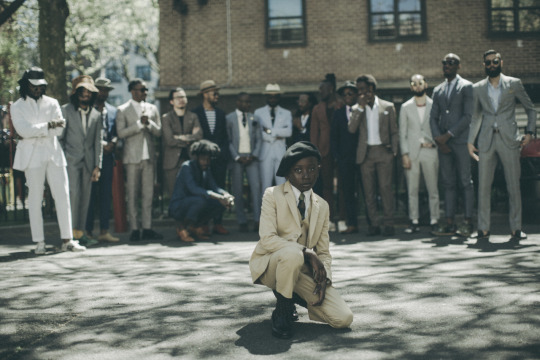

-Harrison G.
0 notes
Text
X and ALI
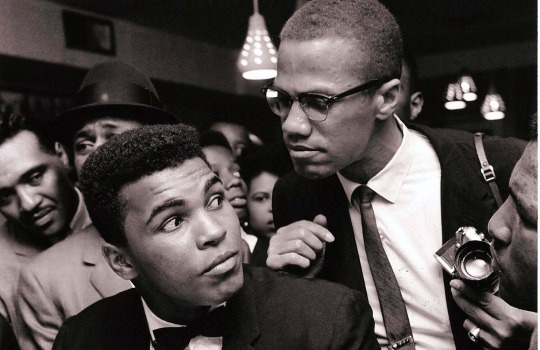
Malcolm X and Muhammad Ali are two titan figures that we imagine individually in their own light. In popular discourse of each figure, one rarely sees the intimacy in which these figures’ journeys were intertwined and the extent in which they influenced one another. Both figures with widely circulated images have performed many different identities in order to manage the dangerous and volatile political and public sphere, but as a result static meanings have overshadowed others in popular imagination.
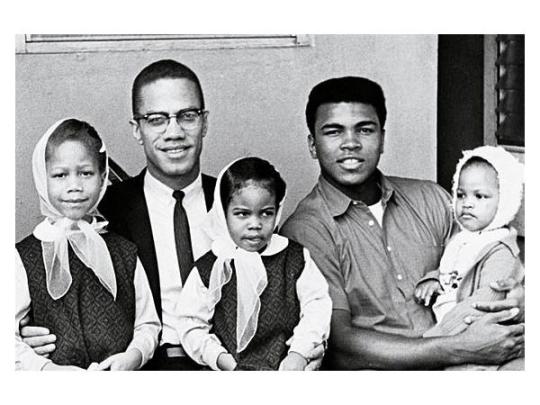
When describing Malcolm X, one can visualize a prophetic conviction and fiery indignation, much of which is depicted through various forms of visual culture (photography and tape). When thinking of the image of Malcolm X individually, one does not visualize a boisterous, comedic charisma associated with a young Cassius Clay. But when you examine these men together in one image, it tells a different story about each. Malcolm X becomes less of militant figure and voice, but as an outgoing and nurturing mentor and older brother. And a young Cassius Clay becomes less of a bombastic, fun-loving, independent athlete, but a student, thinker, mentee, a younger brother, and the man that will eventually transition into the political figure and symbol, Muhammad Ali.
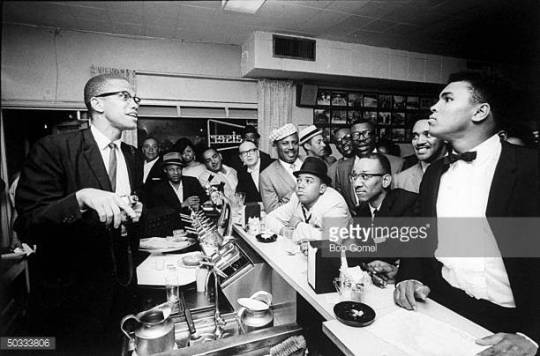
Images like these that depict the men in a different light functions as a counter-archive that undermines static depictions and meanings attached to them, dislodging them from symbolic/iconic imprisonment. Through these images, it is interesting to think about what is gained and lost through the repetition of narratives and meanings attached to these figures, and what could be portrayed through these images that cloak other realities.

-Harrison G.
References:
Randy Roberts and Johnny Smith Blood Brothers: The Fatal Friendship Between Muhammad Ali and Malcolm X
Nicole R. Fleetwood Troubling Vision: Performance, Visuality, and Blackness
Leigh Raiford Imprisoned in a Luminous Glare: Photography and the African American Freedom Struggle
0 notes
Text
“What does your avatar look like?”
By Simone A.
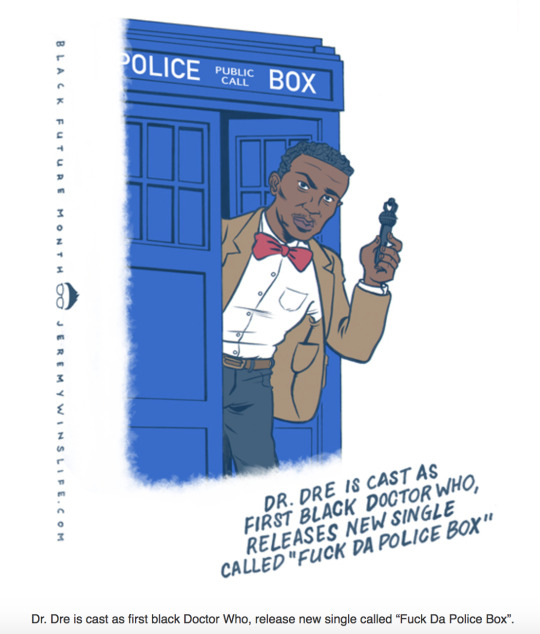
Earlier this week in class as we discussed Embodied Avatars : Genealogies of Black Feminist Art and Performance by Uri McMillan, a heated discussion took place. During said discussion there was question posed to me,“what do your avatar look like”? Although I had never thought much about what mine would look like, in the moment I responded “something transparent that could just observe and prevent people from interacting with me”. Now in the context of the text at hand, that may not fly as these avatars are for performing a certain expectation. That question has since plagued me since class ended last week. Having used avatars for online platforms, most have included me hiding the lower half of my face. Perhaps a subliminal message to others, you may look but cannot engage. But that apparently isn’t enough for my brain and life apparently. If as a self proscribed introvert with minor extrovert tendencies must engage with others, I need a stronger avatar. Enter Dr. Who. As a young child my father always shared things he liked growing up with my siblings and I. Although by the time Dr. Who reached the US, my dad was a young man in his 20s. I grew up watching what used to be a very campy show till the show got a reboot in 2005. As a black Whovian (fans of Dr. Who) I have my favorite Dr. Who reincarnations, #3, #4,#6, and #7. Dr. Who as a concept as an avatar is interesting as he is the same person but has reincarnations that have their own unique personalities. Although they been played by white male actors , in some capacity I can identify with the 4 Doctors I mentioned. Perhaps the best avatar for me to channel then is a time traveling (historian in training), shape shifting (interdisciplinary trained) alien (African American woman) to met the expectations of the academy.
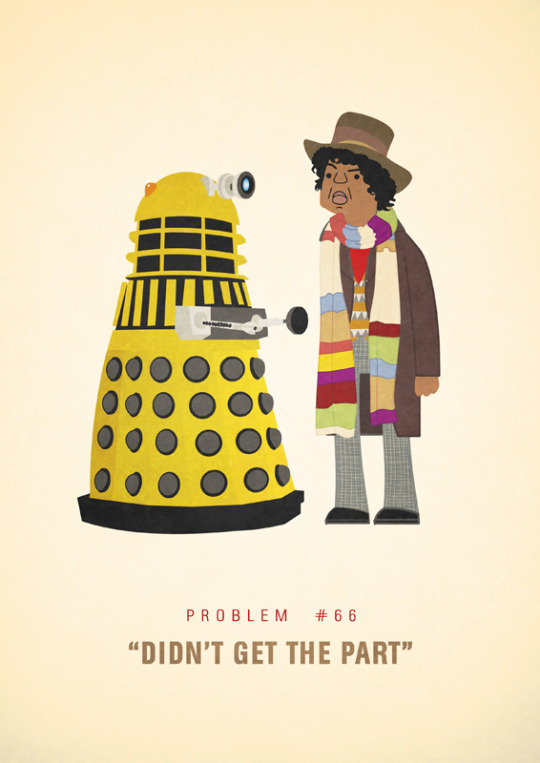
Photo Sources:
https://www.fastcompany.com/1683399/all-of-jay-z-s-99-problems-illustrated
http://www.jeremywinslife.com/who-dat-doctor/
http://probs99.tumblr.com/
#Dr. who#black whovians#black material culture#avatars as performance#science fiction#performance art#probs99#ali graham#jeremy nguyen
1 note
·
View note
Photo
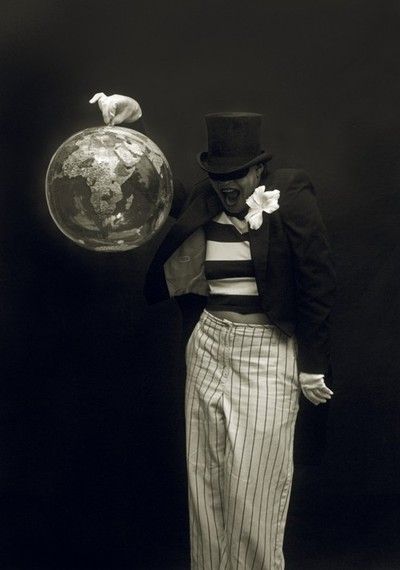
Are We All Performing?
by: Kelli
As a designer and now historian-in-training, reading Uri McMillan’s Embodied Avatars: Genealogies of Black Feminist Art and Performance this week was a feat in understanding objecthood, black performance art, and avatar production. He introduced these three concepts as an analytical framework from which to interpret the reasons and labor put forth by black women performers. Looking at his theories through a lens of Black material culture is reading the bodies of Black women performers not as they have historical been objectified by a white gaze but as subjects who through their own agency choose to perform using the objectification of their own bodies. The body {or the avatar} becomes the Black material culture we study. Through his reading of several artists, he shows how these “artful performances…hint at new possibilities for self-making in the African diaspora amid the imbroglio of history.” The way he read the performance of Nicki Minaj in “Monster” gave me a newfound respect for her as an artist and businesswoman. I will not say I will listen to her music, but I have ‘tininchy’ bit more respect for her. More importantly, I see the concepts in this book applied to Black people in this world. This book moved me to consider my own performances in this world as a young, Christian, Black woman with many nerdy interests, researching Black historic interiors and material culture in a PWI. Do I need my own avatar? Besides seeking out people of my tribe where I may speak my truth, how do I find balance as I continue on this journey?
Works cited:
Uri McMillan, Embodied Avatars: Genealogies of Black Feminist Art and Performance (New York: NYU Press, 2015), 21.
Photo courtesy of Carrie Mae Weems, The Joker via https://www.pinterest.com/pin/139682025917185569/
0 notes
Photo
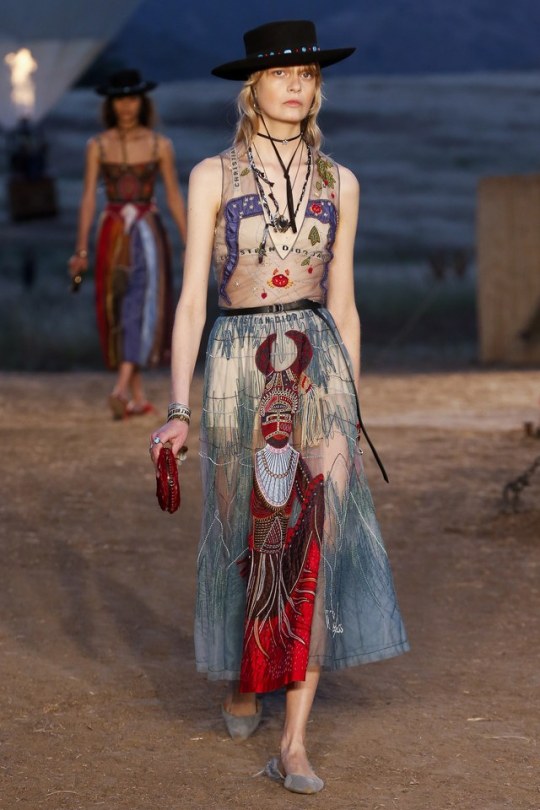
I’ve been railing against Dior lately. It’s Resort 2018 collection gave me a lot more to complain about. With this collection, rich women can now literally wear the racial other. -Samantha
0 notes
Link
Black Material Culture and Encounters with Geopolitical Borders and Institutional Structures (by Brandi L.)
The article featured here became an entry point for me to consider how black material cultures are encountering new issues in the 21st century, especially as mediums for high art and archives for scholarship. This article by writer and art critic Hettie Judah specifically considers the hierarchical and nationalistic structure of the Venice Biennial that is enforced upon the pavilions and art exhibited there. Artists are taking up the threadbare illusion that the violent racial/ ethnic histories and geopolitical battles are only embedded in the artwork but cannot be found in the institution of art galleries and the complicit white viewing audience as well. Even larger questions about what it means to represent the art of one’s nation are taken up as well: what does it mean to serve as representation for a nation in this century? What if you are from multiple nations, or are nationless? While the questions and arguments in this opinion piece remain open so as to consider the many races of people who are effected by European colonial nationalism, I think it is worth considering the specific relationship this has to the people and material cultures of the Black Diaspora.
Several of my posts this semester look at the translation of historical and quotidian black material cultures to works of high art and celebrated scholarship. And in many ways these are the affects and accolades long desired by Black communities, and are of course well deserved. This is particularly important as Black people in art and scholarship struggle with the unique erasures and legacies of not just colonialism but also international slave economies. The work to excavate, reclaim, center and celebrate Black lives and Black material culture makes the work of contemporary Black artists that much more significant. But what does it mean that the visibility and subsequent appreciation for black material cultures first demands these kinds of processes of translation? Do these translations illicit an appreciation for the histories (personal and collective) of labor and love and pain and oppression that are woven into the materials displayed, or an appreciation of the genius artist alone? And inspired by the article above, what do we think about these translations when the institutions and hierarchies that house and display black material culture are in tension with those materials? Many of the books we have read note how black material cultures can resist the boundaries and limitations of time and space- ephemera that endures, aesthetics and styles that are revived and recycled in places far from their origins. While we respect the specific contexts that create these materials, I think we are most captivated by black material cultures’ ability to transcend and resist- but what about the fact that it ultimately lands right back in the types of spaces that seek to impose colonial order?
Los Angeles-born African American artist Mark Bradford is one abstract artist taking up these questions through his use of black material culture and titles drawn from Black literature. Below are images from his contributions to this year’s Venice Biennial. Bradford states, “The exhibition is not just about me, but about all of those who feel like they’re on the periphery,” resisting the individualized artistic genius model enforced by art institutions that erases the collective nature of such work. Moreover, he directly confronts the colonial spaces through the art that lines its walls:
“Physically, I did have a problem with the building itself. It’s kind of Monticello. It’s kind of based on Jefferson’s plantation. Me being African American, my relationship to it would be very different. I thought about the slaves. I didn’t think about Thomas Jefferson. I had to think about the slaves…And it felt like governance. It really felt like governance. So for me I started thinking about what would be underneath that. I am thinking about slaves and subterranean things and grottos. And even if you look in the middle room (the rotunda) on the floor, it’s a compass, a navigational compass. So again, water and route.”
The art makes these confrontations visceral, as it resists conventional considerations of space, viewer mobility, sight lines, going so far as to degrade the pristine walls and colonial elegance of the pavilion rotunda. Bradford furthers his critiques by laying bare the black material culture that serves as his raw material through the accompanying exhibit catalog. It includes the excerpts from James Baldwin and W.E.B. DuBois, and details the materials and cultural influences embedded in the art. Zadie Smith and Anita Hill are also contributors to the exhibit book as members of the intellectual community that helps shape and form his social critique. Lastly, Bradford contributes funds to anti-mass incarceration and social justice organizations through the works he displays, again speaking directly to the historical and current systems of oppression art spaces tends to erase from discourse. Beyond this course I hope to contribute to the creative expressions and scholarly conversations that highlight black material culture in 21st century institutions.
(For more on Mark Bradford’s art in the Venice Biennial and Valentine’s article from her interview with him, check out this link:
http://www.culturetype.com/2017/05/11/artist-and-citizen-mark-bradford-presents-his-democratic-vision-at-venice-biennale/



0 notes
Photo

As one of the co-founders of the Black Arts Movement collective AfriCOBRA, fashion designer Jae Jarrell made one-of-a-kind clothing using the bright hues the collective called “Coolade” colors. Jarrell’s vibrant garments exalt black families and culture and were worn by the artist in her daily life. She wrote that her Ebony Family dress “always got good vibes from our members, no doubt, because my political stance on nurturing the strong loving Black family is real, and personally experienced. We regarded the members as extended family.”
Jae Jarrell (American, born 1935). Ebony Family, ca. 1968. Velvet dress with velvet collage. Brooklyn Museum, Gift of R.M. Atwater, Anna Wolfrom Dove, Alice Fiebiger, Joseph Fiebiger, Belle Campbell Harriss, and Emma L. Hyde, by exchange, Designated Purchase Fund, Mary Smith Dorward Fund, Dick S. Ramsay Fund, and Carll H. de Silver Fund, 2012.80.15. © artist or artist’s estate
62 notes
·
View notes
Text
Sometimes…
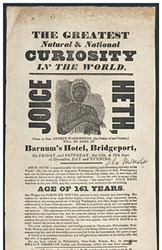
The spectacular savagery with which white people are perfectly comfortable to use and abuse the bodies, lives, stories the very existence of Black people on some level is banal, quotidian, American. But sometimes, it remains part of what resists my ability to understand and therefore incorporate into the ways I understand myself, the world and other people. Or perhaps my refusal to accept the ongoing evidence of white inhumanity is the sliver of doubt I ascribe to the contention that this utter depravity is endemic to something in whiteness—a variable, and therefore not a defining feature of white people.

I have had pets all my life. We had dogs, cats, guinea pigs, parrots and turtles when I was a child. Of course, I have a dog; a geriatric Chihuahua who controls more of my life than I care to think about. Taco—I know his name is corny—though not human, is very sentient, opinionated and finds ways to exert his ideas, feelings and dislikes which in turn influences the ways that I treat him. He is not an object, but in many ways, is not quite a subject. Taco and I, and people we interact with are constantly navigating mediated interstitial spaces. We are shaped by each other as we shape each other in turn. He is sentient, dependent and expressive; I could and would do no less than care for him and about him as his guardian, as an adult, as a person with far more power than he will ever wield but primarily as a human being. How much greater should the obligations for a basic level of recognition, treatment, expectation from one human being to the other? One fully sentient being to another? One life form to another? Is there a base-line?
There was a story in the news —you may have missed it because in our scary world dominated by invisible algorithms, Google knows that I like dog stories and prioritizes dog stories in my semi-proprietary news feed. An older dog was rescued from a life of abuse—it had lost an eye to infection, it was under-fed, locked in a basement, never walked, clearly and extremely unloved. Now, that in and of itself is not remarkable. Animals are abused all the time. But, there was an upstairs dog in this house. This dog was cared for, taken to the groomers, loved and fully incorporated in the life of the family. Obligingly, there were pictures. I do not know if this was a white family. That is not what caught my attention. What caught my attention was the contrast in the lives of the upstairs dog and the downstairs dog. Why the difference? They were both literally the same species. The ways that this one family, as a microcosm of society could seamlessly abuse one dog while tenderly care for another—in less than 1,300 square feet of space while both dogs could see and hear each other while seeing and being heard by all the people who lived in the house, that was confusing.
Heth lived during slavery. She was purchased by PT Barnum, either addicted to alcohol before or during her tenure with Barnum. The use of alcohol, oddly discussed and analyzed by McMillan, reminded me of the ways that J. Marion Sims used opium on Anarcha, Betsy and Lucy after operating on their vaginal fistulas to develop and refine his surgical techniques and instruments. After. Holding them down face first on the operating table. After. Hearing their screams. After. Listening to their cries and pleadings. After. Cutting into their living flesh with sharp instruments. After. And again. And again. Anarcha alone endured 30 operations as she was physically restrained and screaming. Without anesthesia. Sims cut the most private, intimate areas of their bodies, which he owned and used most disgracefully, inhumanely. Repeatedly. These Black women were routinely publicly exposed for the doctors in training and to the men Sims hired to restrain them. His techniques, once perfected were used on white women gaining Sims fame, money and the title of Father of American gynecology. He died, a wealthy white man while Betsy, Anarcha and Lucy have been absorbed into the archives. Of course.
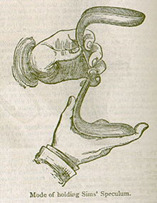
PT Barnum explained that he removed Heth’s teeth to make her appear older. Really? I could not help but wonder, with anesthesia or without? To whom would it matter? According to McMillan, Heth (perhaps) used alcohol as a way to endure or enact her public “performances”. Did she? For 7 hours a day, Heth was on display to festoons of white people who had the right to touch her, touch her? Put their hands on her. Strangers, touching her for hours, this is performance? Asking her questions and gawking at her as she lay in bed, in public, broken in health the property of Barnum. This was her performance? Really? The fuck you say. After Heth died, PT Barnum arranged for a public autopsy to be performed on her body as 1,500 spectators watched after paying 50 cents admission. Watched? Watched. So even in death she was still performing? Where is this agency? How grotesque. Heth’s performing was not her use of an avatar but rather Heth was Barnum’s avatar-an expression of his racist, monstrous crust of white manhood. How is this in any way not clear? Hortense Spillers many years ago, invited us to think about the distinction between body and flesh. To “impose distinctions between captive and liberated subject positions.” (206) McMillan seems truly devoted to Frankensteinesque suturing of the two making the Black FEMALE body the recipient of his bad handiwork masquerading under the ill-fitting garb of agency and more annoyingly, art. Funny how men, have such difficulty seeing and recognizing Black women’s pain…and apparently, no problems with creating worlds, theories and images that degrade, debase and spectacularize Black women’s bodies.
I think there are compulsions in human nature which manifest in ugly and destructive ways. I do not think those inclinations the preserve of any one race. Whiteness however, that is a horse of a very peculiar color. McMillan’s discussion of Mammy Memory in conjunction with the principles of Black quotidian performance erroneously and disturbingly situate Heth as a Black performance artist. But, what this text does more clearly than many we have read this year, even those on lynching, is reveal the perverse extents whiteness and patriarchy, even when it comes dressed in lavender will travel to revel and bask in its depravity. And since you will rarely find whiteness without white people…
#sodone #welltiad #sometimes…
MicMillan, Uri. Embodied Avatars. 2016
Spiller, Hortense. Black, White and in Color. 2003.
Denise.
0 notes
Text
Lee Daniel’s Black Women Activists

In Lee Daniel’s The Butler Yaya Dacosta plays the role of Carol a young black woman activist in the Civil Rights movement. The film focuses on the story of Cecil Gaines’s tenure as the White House butler and his complicated relationship with his activist son, Louis. While the audience is moved through this dynamic story several subplots emerge, including glimpses into Carol’s life. Primarily, the audience understands Carol to be the influential driving force for Louis’s activism. She is portrayed not only as his primary partner but also the catalyst for his joining the Black Panthers later in the film. Carol’s activism can be tracked through her actions such as her participation in sit-ins, freedom rides and Panther politics, but her activism can also be traced through her dress. At the start of the film she dresses in long skirts and a blazers like any middle class college student. At the lunch counter sit-in she ties her hair back under a scarf to protect it from the ketchup, mustard, and spit hurled at her. Then, as a Panther, she dress in all black with a leather jacket and sporting a fabulous Afro. As Carol’s activism evolves so too does her personal appearance and demeanor. In the beginning of the film Carol is quite demure and predictably proper. One of Carol’s last scenes is a tumultuous dinner at Louis’s home where she meets his parents for the first time. Carol belches at the table, wares a strappy tank top that shows her underarm hair, and adamantly states the she and Louis are nothing more than friends. The dinner erupts when the son is kicked out of the house for disrespect of his father and then the mother, played by Opera, tells the son to “take that trifling low-class bitch” with him. After this moment Louis begins to question his role in the Panther party whereas Carol is firm in her participation. Carol’s evolution not only highlights black women as important players and leaders in the Civil Rights movement, but also details how female black radical activism was not necessarily accepted by the wider black community and, therefore, the additional struggles and obstacles these brave women activists went through.
Ward
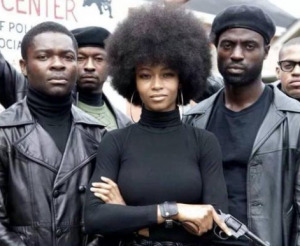
0 notes
Text
Possessions
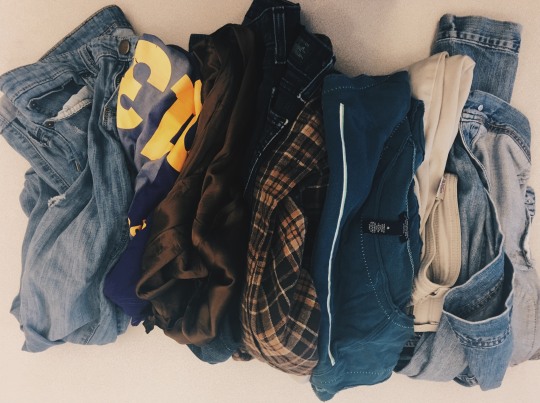
As part of a class project every student was asked to bring in an article of clothing that they didn’t mind getting messed up. The results reflect the diversity in the things we keep and the things we are willing to part with.
Here lies my perfectly worn-in, super soft, stressed in all the right places Gap boyfriend jeans. In loving memory of all the LA Dodgers games you undoubtedly won for us fans, your luck will never fade. RIP
I selected a brown satin blouse with Victorian-style sleeves (it was popular at time of purchase!) from Express Studio, purchased about ten years ago. It's a blouse that I've worn less than a handful of times in the past ten years. I would have given it to Goodwill but during class Simone suggested re-purposing it as a pillow-cover for my hair when I travel. It was a novel idea, so I am keeping it after all!
Purple is my favorite color and though I prefer silver, the gold sets off the bold rich tone of royal purple exceedingly well. Thanks Harrison!
Mine is a shirt that I picked up from the grad office. It's a blue American Eagle shirt with short sleeves. It oddly reminds me of the hand-me-downs that I got from my sisters. I never shop at AE for this reason.
I brought in khaki jean capris that were my size at the time however petite as I am 5'9.5. I got these pants from a goodwill and plan on donating them again since they no longer fit me. In a sense they kind of represent my long struggle of body issues, eating and trying to fit in. Except this time I'm rolling with the changes my body goes through instead of trying to fit it. Or so I think.
I was nervous about bringing in an article of clothing for class because I did not want to cut up any of my clothes; I obsessively clean my closet of unwanted articles so I didn't feel like I had something I wouldn't mind giving away. I decided to wear my article instead so that I would be sure to get it back afterwards. Because I was wearing it and thus had to remove it for the exercise, the experience made me feel extremely vulnerable. Seeing everyone handle my jacket and comment on its style made me extra aware of my body and the way I present it to the outer world.
These jeans are worn and faded, but that’s because I have been wearing them for years. I always by my jeans form Levis. They fit the best and the longevity you get out of quality material is worth the extra cost. This pair smells a bit like smoke since I was working in a forge the last time I wore them. These skinny jeans have a little stretch which has kept them going, but now the seams are struggling to hold themselves together. It’s time to retire this pair of denim
2 notes
·
View notes
Photo
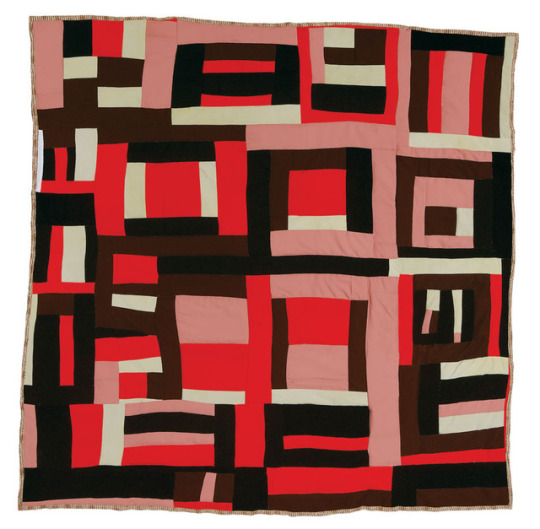
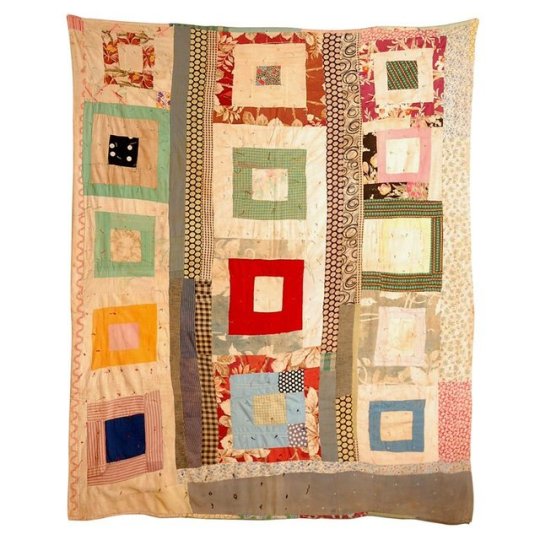
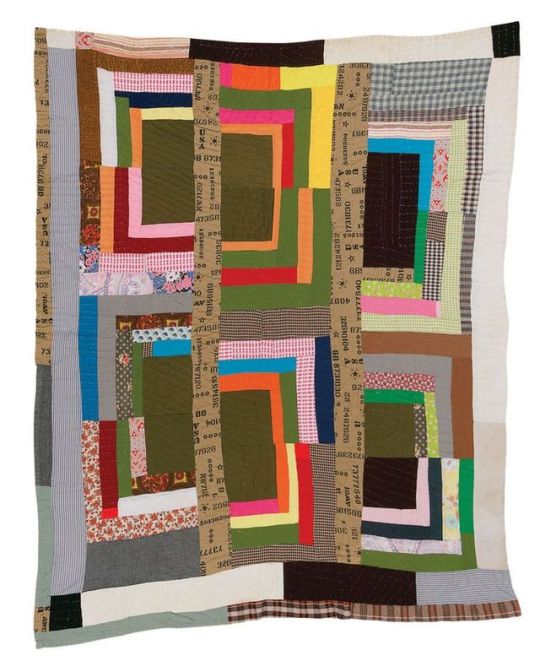
The Quilters of Gee’s Bend, Alabama
Reading Uri McMillan’s book Embodied Avatars: Genealogies of Black Feminist Art and Performance reminded me of the quilters from Gee’s Bend, Alabama and their famous work, a few of which are pictured above. McMillan’s exploration of the careers of black women such as Joice Heth, Ellen Craft, Adrian Piper, and Howardena Pindell delineates the struggle of being black, female, and an artist and be recognized as such. In 2002, the quilters from Gee’s Bend debuted their work at the Museum of Fine Arts, Houston. Critics who reviewed this exhibition struggled to classify the work: was it high art or craft? In order to make sense of it, they often equated the quilts to Modernist, abstract painting. For instance, critic Peter Plagens stated, “It’s as if something in the local water has produced a whole villageful of Paul Klees who create their vibrant work on a bed-size scale instead of in tiny watercolors.” Plagens could not see these black women as artists in their own right, but rather had to understand their creativity and talent through metaphor. While critics like Plagens could understand the quilts as modern art, they could not see the women as modern artists. In order to change the art world, this dichotomy can no longer exist.
Sources:
Uri McMillan, Embodied Avatars: Genealogies of Black Feminist Art and Performance, New York University Press, 2015.
Bridget Cooks, Exhibiting Blackness: African Americans and the American Art Museum, University of Massachusetts Press, 2011.
-Bridget
0 notes
Photo
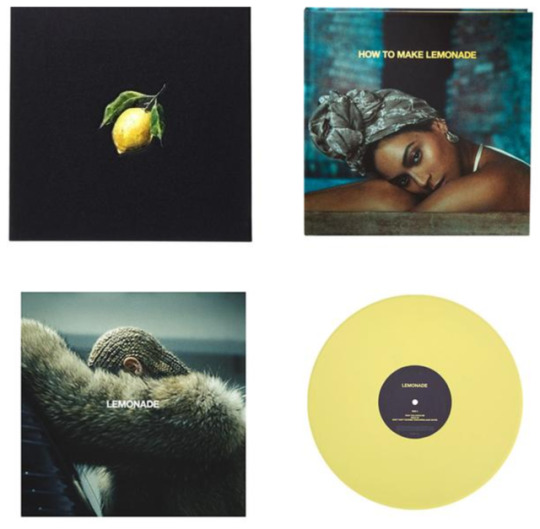
The Consumption and Materiality of Beyoncé/Lemonade
By: Simone A.
You probably saw last Wednesday that Beyoncé released a collector’s edition “How to Make Lemonade” box set that includes a 600+ page hardcover coffee table book, the first pressing of the double LP vinyl and audio and visual album downloads. You probably also heard of the cost of the box set which runs for $300. As a self proclaimed Beyoncé fan between thinking if I would forgo eating for a month to afford the book, I also thought of the consumption and materiality of what Lemonade and Beyoncé mean especially as they relate to Black Material Culture. What does this boxset represent outside of it being an expensive piece of Beyoncé merchandise. Is this ephemera, a word often used in material culture? Ephemera is described as “items of collectible memorabilia, typically written or printed ones, that were originally expected to have only short-term usefulness or popularity”. Many music critics laud Beyoncé as one of the greatest performers of our time and on par with Michael Jackson. If this is the case then are items used or produced that become Beyoncé memorabilia still considered ephemera? Just recently her microphone from The Formation Tour sold for $11,000. I think in 2017 we are beyond asking if this multitalented woman is a fad. In 2003 Kelefa Sanneh wrote for the New York Times a now famous article title “MUSIC; Solo Beyoncé: She’s No Ashanti”. While I have no ill feelings towards Ashanti and her accomplishments, a quick Google search shows really who is no who today. Having established that Beyoncé’s solo career is more than a trend, what does this box set have to offer those interested in Black Material Culture? A lot I would argue. Regularly Black women pen articles and essay’s on Beyoncé’s choices, music and fandom. I think of scholarship like Anne Anlin Cheng Second Skin: Josephine Baker & the Modern Surface and what a book or article would look like using some of the theories presented and some of her conclusions read when talking about Beyoncé. I also think of Kyla Wazana Tompkins’ work in Racial Indigestion: Eating Bodies in the 19th Century and how although she is talking about food and black bodies, there is still a desire to “consume” Beyoncé. Enter the box set. Although the website describes the book as mainly a coffee table book with images from how the album was made, it speaks to people’s desire to consume and know one of the most guarded celebrities. The box set allows interested parties to get up close to Beyoncé so much that it includes handwritten lyrics as well as her personal writings. In joking with friends about who does Beyoncé think her fanbase is, questions do arise about who the intended target audience is with that price tag. The most obvious are those invested in the Beyhive to pay near the thousands for floor seats. But what about cultural institutions? Did any librarians present this as a valuable source for those students who are interested in Black visual culture, music studies, or Black feminist theory? I searched twitter for the phrase “beyonce box set” and came across some Black scholars (possibly) joking about writing off the book as an expense for their research. In “reading” this book, what I have presented is just the tip of the iceberg of the interesting relationship between the budding field of Black Material Culture and Beyoncé*.
*Note: Kevin Allerd since 2010 has been teaching a course on Beyoncé called Politicizing Beyoncé which according to his website, “attempts to think through contemporary U.S. society and its current gender, race, class, and sexual politics by analyzing the music and career of Beyoncé Giselle Knowles Carter.”
#beyonce#kevin allerd#lemonade box set#beyhive#black material culture#second skin#racial indigestion#black visual culture
2 notes
·
View notes
Photo
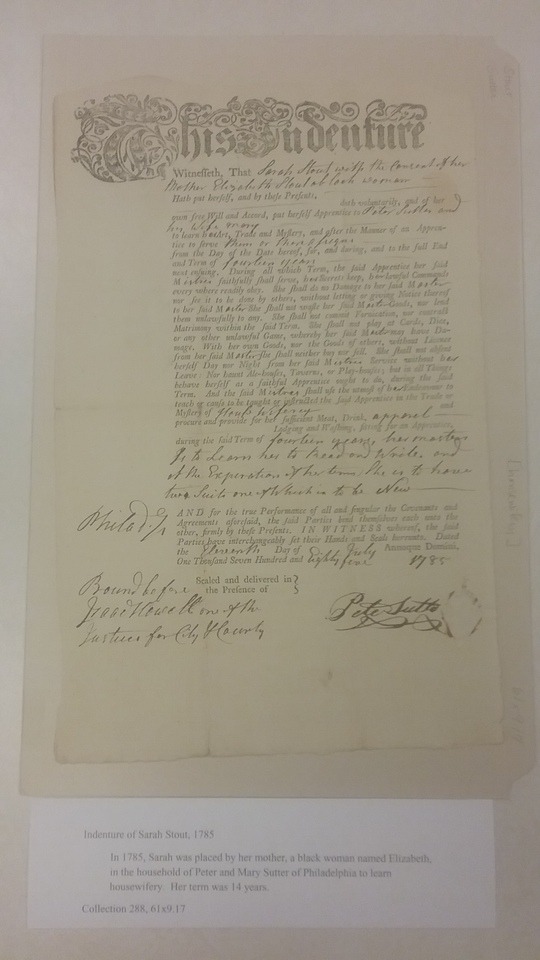
The Indentured Servitude of Sarah Stout
by: Kelli
As a couple of my classmates have already alluded to, this week we had a tour of the Winterthur Historic House owned by Henry Francis Dupont which is not too far from University of Delaware’s Newark campus. I had been to Winterthur for Yuletide, for a regular tour, and for the Downton Abbey exhibition. In 2011, I was also blessed with the opportunity to participate in their two-week Institute program for working professionals. This visit however was the first time I was introduced to the largest array of items in the collection and in the Library archives concerning people of the African diaspora! {As Denise stated in her post, “hidden in plain sight!”} The one item that peaked my interest was this indentured servitude contract from 1785 for a young African American girl by the name of Sarah Stout. She was indentured by her mother to the Sutter Family in Philadelphia for 14 years to learn the skills of housewifery. Indentured servitude was a common practice after the gradual abolition act in the state was enacted. Enslaved African Americans were not automatically free. What was it like for this young woman to live in this European American household in Philadelphia? What skills, knowledge, clothing, tools, accessories, did she bring with her into the house that were passed down to her from African ancestors and how did they converge with those of this European household? How did this syncretism influence the people in the household or the running of the household? Teasing out these influences through a lens Black material culture will allow us to better understand quotidian lives of African Americans in 18th and 19th century Philadelphia and their influences on the political, religious, and social movements of the times, some of which we are still dealing with today in society.
1 note
·
View note
Text
Vogue runs an article about the “beret trend” without mentioning the Black Panther Party
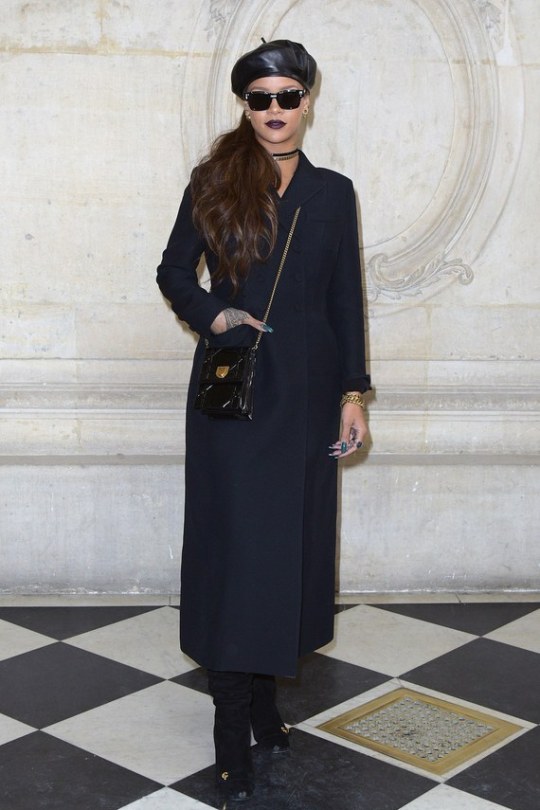

-Samantha
2 notes
·
View notes
